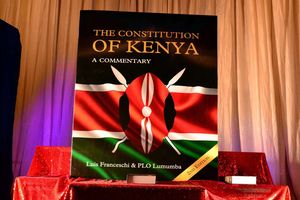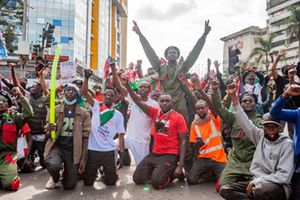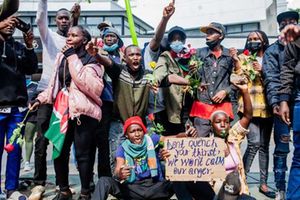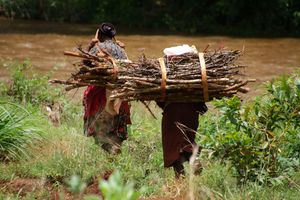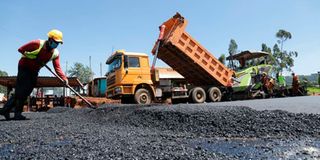
Construction works by Kenya Rural Roads Authority.
Here is the news. The government will shortly be going to the rooftop to announce that it has clinched a deal that will enable the release of an estimated Sh175 billion to be injected into the budget of the troubled road maintenance sector. By any measure, this is going to be a game-changer because on the cards is an injection into road maintenance equivalent to this year’s total annual budget for the whole roads sector.
This is what wonks call the front-loading of infrastructure spending—you spend a huge chunk of money at once instead of spreading it thinly for years because you want to take advantage of the heavy upfront spending to achieve much more for the broader macro economy, including a major injection of liquidity into the macro economy and an economic stimulus into the construction sector.
Question: Where has the cash-strapped government found this money?
Answer: Faced with high borrowing costs, constrained access to international credit markets and against a backdrop of Western rating agencies seeming like they have conspired to downgrade you, President William Ruto’s administration has come up with a more complex financing solution for the maintenance of roads. In the jargon of the wonks in the rarefied world of high finance, the solution is called “securitisation of receivables”.
Cairo-based Afreximbank and Trade Development Bank—acting as mandated arrangers—will shortly be announcing that they have just closed what counts as the largest roads funds receivables securitisation transaction in the region, which has raised Sh175 billion, through “securitising” receivables and cash flows of parts of the road maintenance levy.
At the risk of being accused of engaging in oversimplification, I will try to explain the transaction in a language that enables every reader of this column to join the conversation.
Suppose your name is Mr Chris Kirubi (may his soul rest in peace) and you own that high-end property known as International House in Nairobi’s central business district, for which you receive an annual rental income of Sh60 million. You plan to build another multistorey building at a cost of Sh600 million but you don’t have the money. So, you sell your rights to your annual rental income to a third party by allowing him to be the one to own and collect the rent for a period of 10 years.
Third party
In exchange, that third party, typically a special purpose vehicle (SPV) established by the mandated arrangers and a consortium of commercial banks, gives you a one-off Sh600 million cash payment to compensate you for the 10-year annual rental income you will have forfeited in that transaction. You have the money you needed for your new project.
The full details of the transaction are still scant, but the briefing I have is that the transaction is structured as follows.
First, out of the Sh25 per litre of petrol and diesel currently collected as the fuel levy, only Sh7 is being “securitised” and sold to the SPV at a price consideration.
It is a complex and sophisticated transaction with many components, including a syndicated loans part. I also gather that the parties have signed tight receivables purchase agreements, meaning that the money will be ring-fenced and only used to pay roads contractors.
Another advantage of this innovative financing solution is that the loan sits on the balance sheet of the SPV instead of the books of the roads fund agency. In the lingo of high finance, this is what is known as a non-recourse deal where the road fund agency carries no repayment risks.
Another advantage: this type of deal allows the government to circumvent debt ceiling thresholds set by Parliament.
The transaction is supported by several institutions, including the International Monetary Fund, Citi Bank, StanChart and the Standard Bank of South Africa. Important details such as the interest rate on the transaction are yet to be disclosed. But government spokesmen are touting the transaction as having terms better than those at which the sovereign has been borrowing.
What are the broader policy implications? Maybe other government entities with regular and secure receivables, such as the Railway Development Levy and Petroleum Development Levy, should start thinking about the securitisation of receivables as a model for financing infrastructure projects.
We should prepare to see renewed activity in the roads construction sector. Suppliers of goods and service to road contractors who have been braving crippling cash flow problems, especially cement and steel, can now breath.
The cash injection will also have implications on non-performing loans in the banking system because several road contractors were facing the threat of being auctioned.
Risk: Although the fuel level is protected by an Act of Parliament and therefore guarded, we’ll have to wait and see if some greedy politicians will not start plotting how to dip their hands in the jar.

